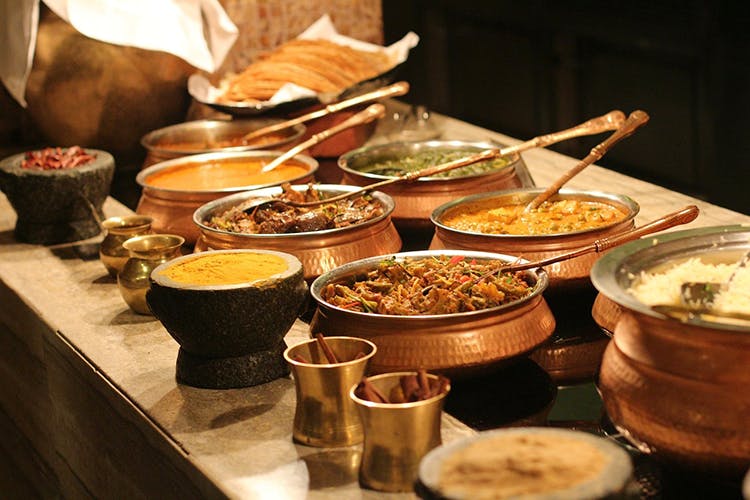This is a piece about the many-splendoured cuisines of Delhi.
Why cuisines and not cuisine? You may ask, but you’re not going to get an answer straight away.
Hopefully, if you have the staying power to hang around till the end of this long winded and meandering recap of the histories of what we eat in Delhi, you might have an answer or two about why I say cuisines.
And let me warn you before you proceed any further: This is not going to be a piece that will end in one post, there will be at least one more post before I end this narration.
But before we begin talking about the cuisine/s of Delhi and get down to the meat, {or is it the leaf and root?}, of the matter let us first contextualise Shahjahanabad. The word literally means ‘settled by Shahjahan’ or ‘the city built by Shahjahan.’ The socio-historical context of Shahjahanabad has played a crucial role in the evolution, and dare I say also in the in decline, of its gastronomic traditions, but we will talk of that later.
Shahjahanabad was one of the seven cities of Delhi. Construction of the fort and the city began in 1639 and the city was inaugurated in 1648, when the fort and many of the palaces of the nobles were ready for occupation. Like most cities, Delhi too was not built in a day, new residential and commercial localities, mohallas, kuchas, katraswere constantly added as settlers continued to pour in from far and wide.
A large population of royals, nobles, mansabdars, court officials, scholars—of spiritual,and secular disciplines—artists, poets, musicians, officials, soldiers, artisans, craftspersons and sundry hangers-on–essential components of any feudal court, arrived in Delhi from the earlier capital Agra, or Akbarabad. They arrived with their families and retainers.
Many of those that made the Agra-Delhi transition could have been descendants of those who had been part of similar to and fro, shifts between the two cities in the time of Sikandar Lodi to Sikandra and Agra, in the time of Humayun once again to Delhi, and then in the time of Akbar to Agra once again.
One needs to remember that there was a constant back and forth between the two cities, when Agra was the capital, Delhi had the status of the second capital, and Agra did not lose its importance when the capital moved to Delhi.
While ‘Nazeer’ Akbarabadi, probably the first truly people’s poet in India, moved from Delhi to Agra, Meer Taqi ‘Meer’ and a few decades later, Asad Ullah Khan ‘Ghalib’, moved from Agra to Delhi. So people were constantly shifting between the two cities—not only when the capital shifted, but also in the intervening periods, and therefore developments in one city sooner or later reached the other and changed things there, sometime for the good and others in ways that made people think nostalgically of a past that they had hated not too long ago.
When Shahjahan formally shifted his capital to Delhi, those who made the shift from Agra would have included a rich mix of Indians, including people from Braj, Bharatpur and Mewat, Rohelkhand, Haryana, Punjab, Kashmir, Malwa, Bundelkhand, Gujarat, Mewar, Marwar, Nimad, Khandesh, Bengal and Bihar—aside from Turks, Persians, Pakhtoons, Hazaras, Tajiks, Uzbegs, Mughals, Siddis, Habshis, Abyssinians and Ethiopians. This mix had been a part of the Mughal and also of the earlier courts.
All these people, as they moved from lands spread across and beyond the south Asian peninsula, carried with them their own languages, attire, music and architecture; they also carried with them their recipes and styles of cooking. All these mixed with all the others across centuries and eventually led to the emergence of new vocabularies of expression in all these fields of dance, music, attire, architecture…and food.

